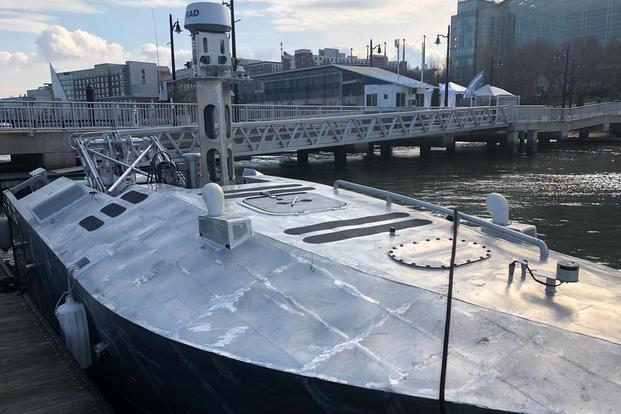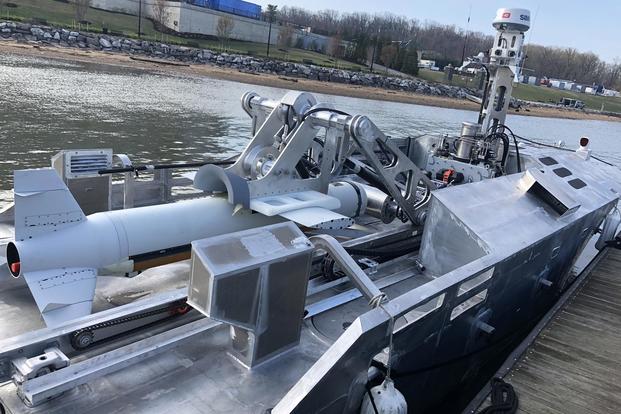NATIONAL HARBOR, Md. -- After a decade of development, an unmanned surface vessel designed to conduct minesweeping missions for the Navy is heading to final tests.
And others are taking notice, Textron executives said.
Texton's Common Unmanned Surface Vessel, or CUSV, made its trade show debut at the annual Sea-Air-Space exposition this week. The 39-foot boat is being developed for all three elements of the Navy's mine countermeasures mission: minesweeping; mine-hunting, with integration of the AQS-20 and AQS-24B sonar systems; and eventually, mine neutralization, said Wayne Prender, vice president of control and surface systems for Textron Unmanned Systems.
It's designed to deploy from the both the Freedom and Independence variants of the littoral combat ship as part of the ship's mine countermeasures package.
With Navy-led developmental testing set to take place later this year, Prender said some are looking at the CUSV with an eye to what else it might be able to accomplish.
"The Marine Corps is very interested in what we're doing," Prender said. "So in addition to unmanned [mine countermeasures], the whole expeditionary warfare [mission set]. ... We continue to explore with the U.S. Navy and the Marine Corps how we can continue to use unmanned systems, specifically our CUSV."
The Navy's director of Expeditionary Warfare, Marine Maj. Gen. David Coffman, said late last year that he wanted to see the service invest in more small surface vessels for coastal operations.
"If we were to claim any moniker, we want to be the father of the 1,000-boat Navy," Coffman said then.
Prender said the possibilities with the CUSV are "really endless."
"It's commonly referred to as a 'pickup truck of the sea,' " he said.
The CUSV's open modular payload bay, expanded from earlier prototypes, will likely end up supporting a wider range of warfighting missions.
In January, Textron announced it was testing out surface warfare payloads with the CUSV, including "various missiles, designators, sensors, and remote weapons stations.
"That's a pretty exciting opportunity that we've engaged with," Prender said. "CUSV certainly ... is designed for the LCS ... but it's also capable of coming off vessels of opportunity. We've done in demonstration [the expeditionary transfer dock] USNS John Glenn. There are varieties of host ships we can launch from, to include operating from pierside, with a ground control station, whether over direct line of sight or potentially beyond line of sight."
The CUSV is currently wrapping up builders' trials before Navy-led testing begins.
-- Hope Hodge Seck can be reached at hope.seck@military.com. Follow her on Twitter at @HopeSeck.
Related Video:













